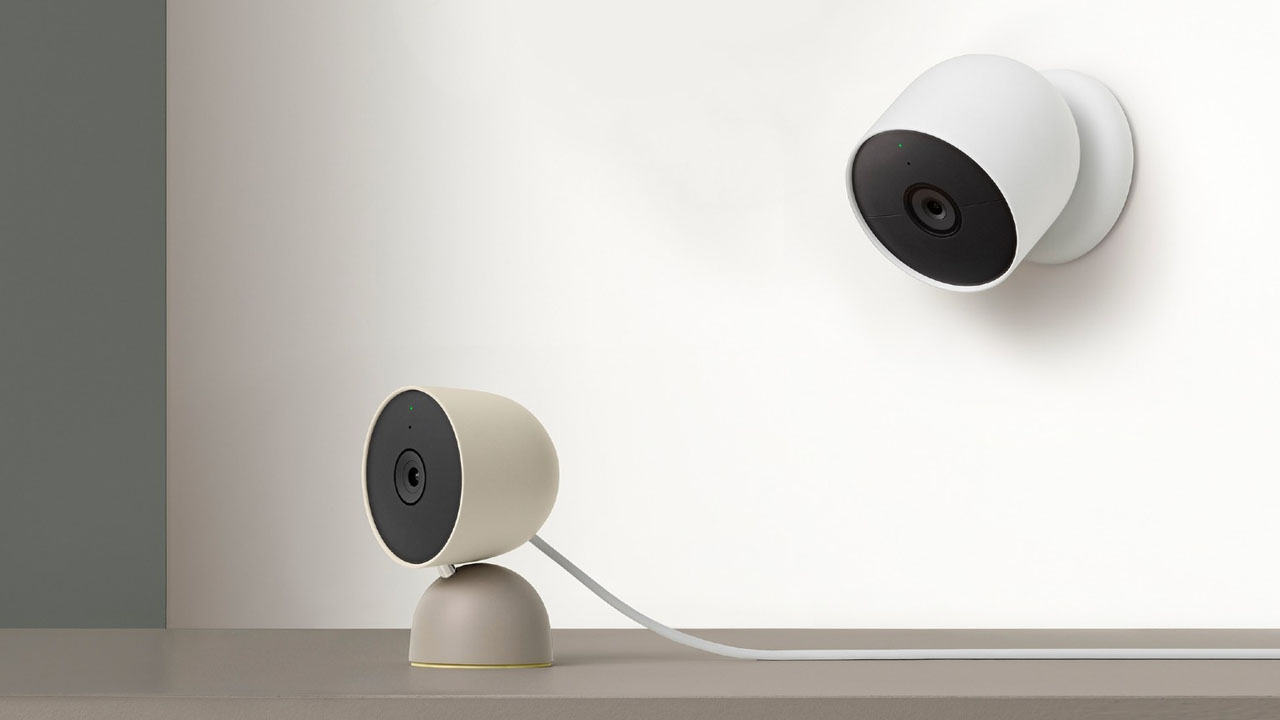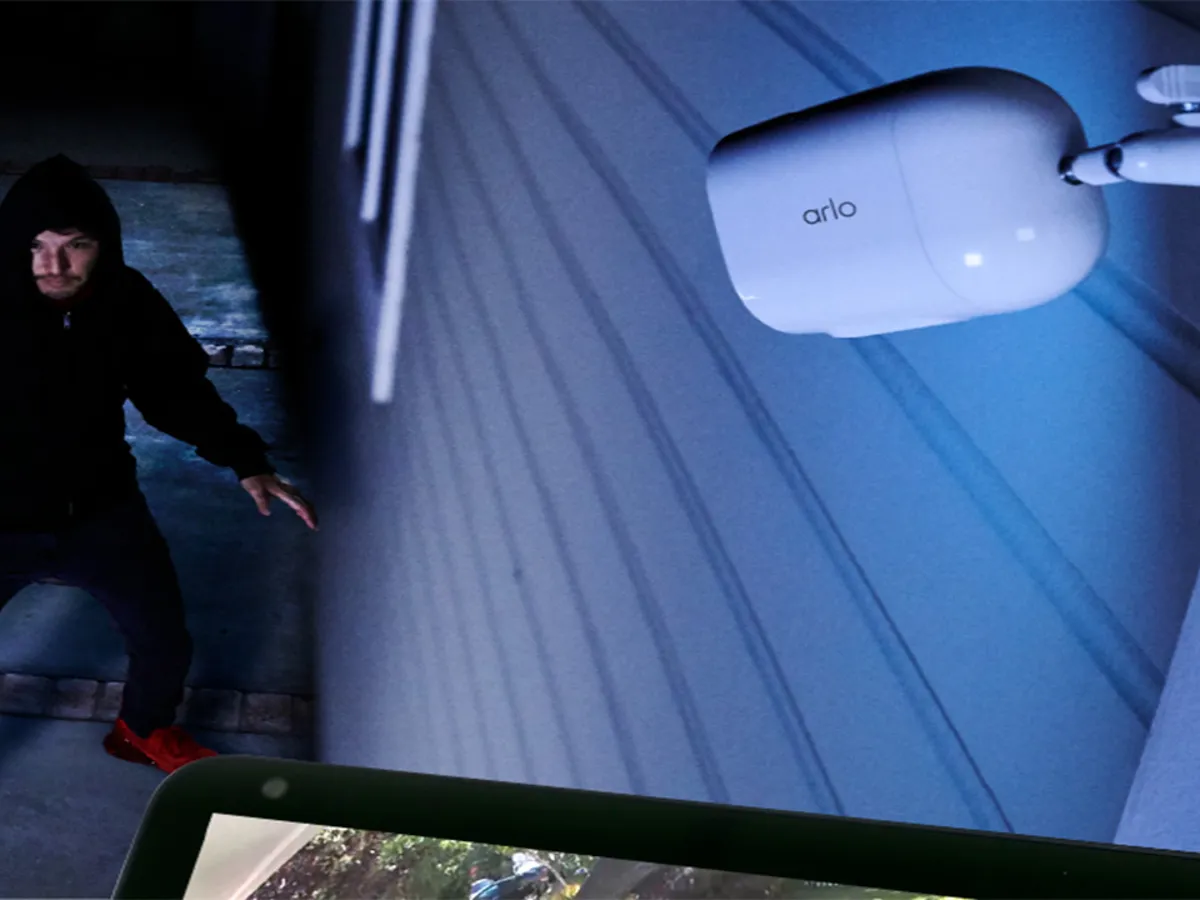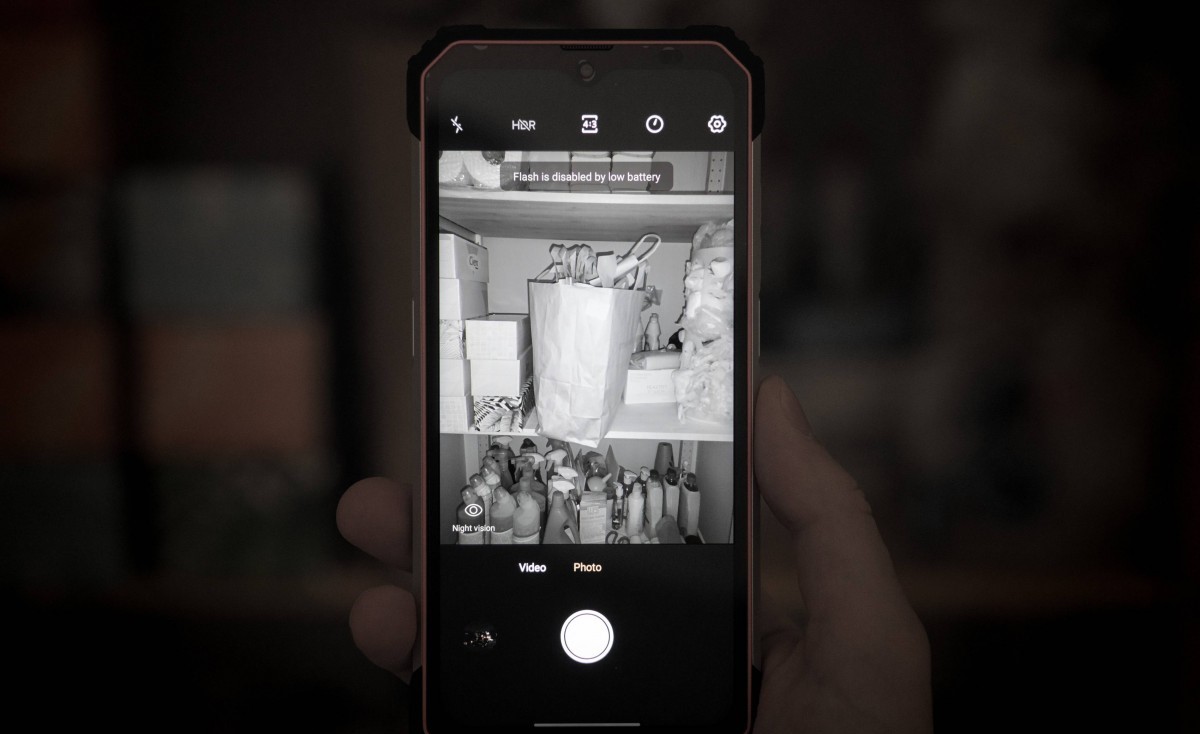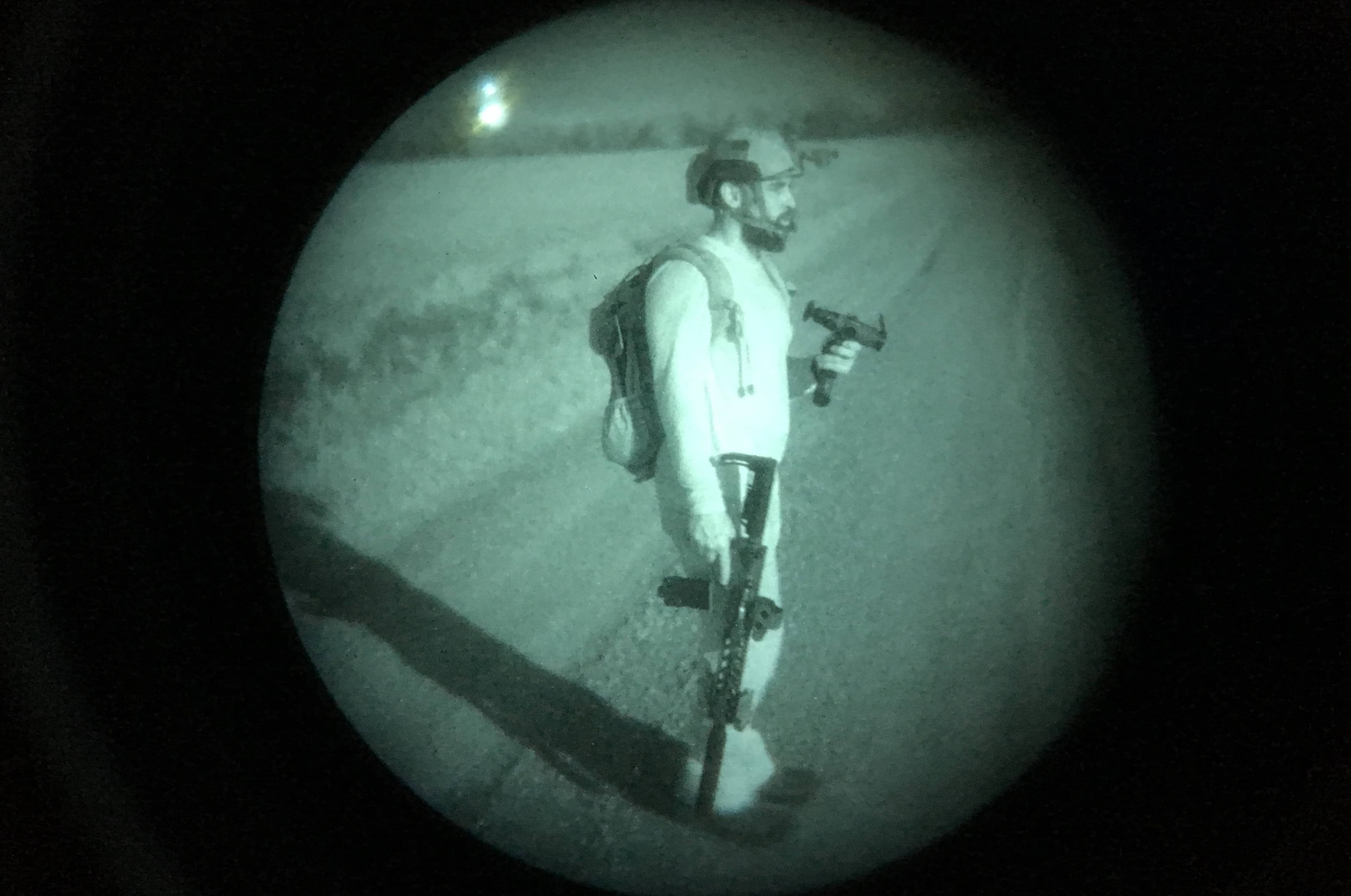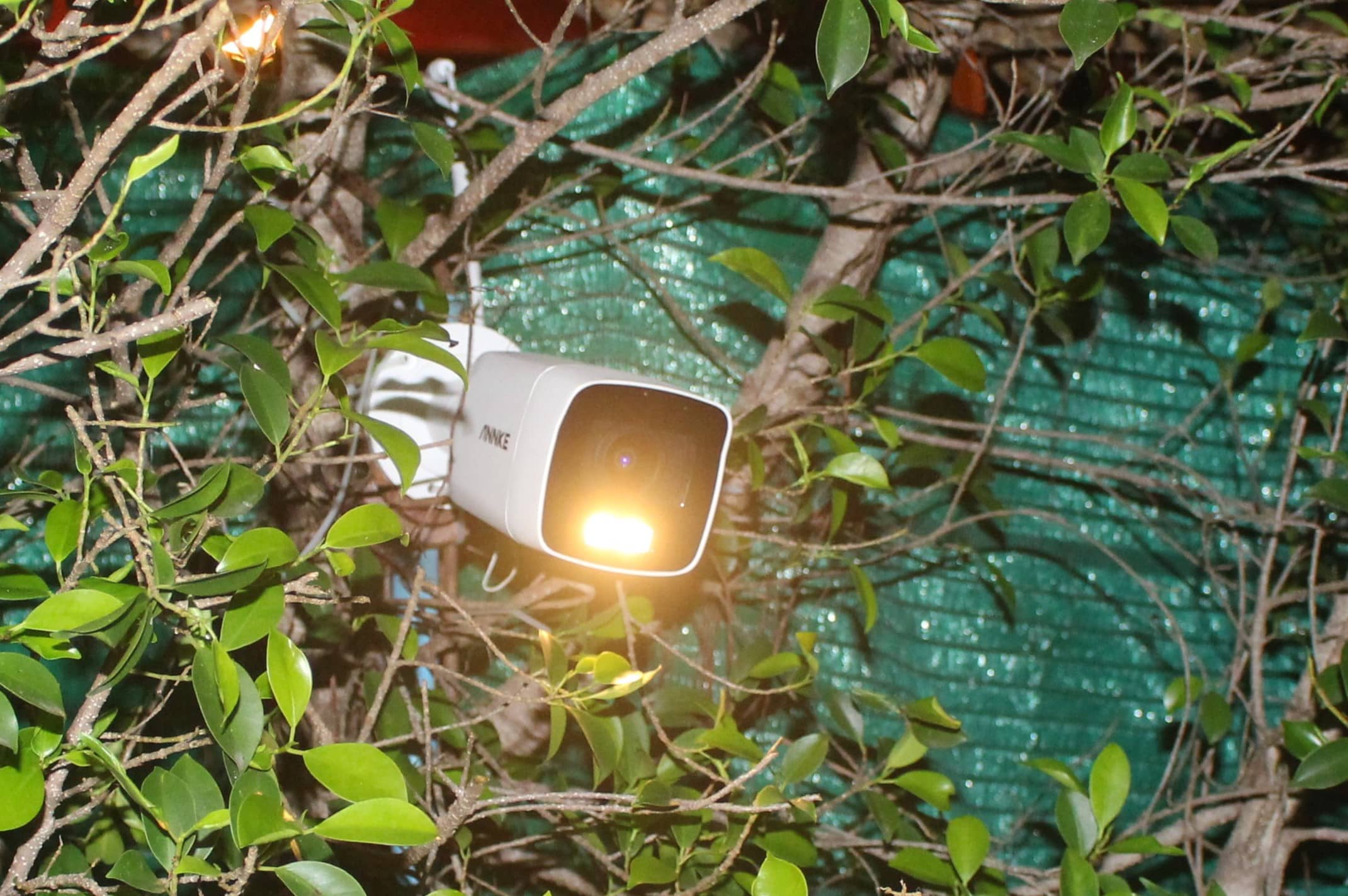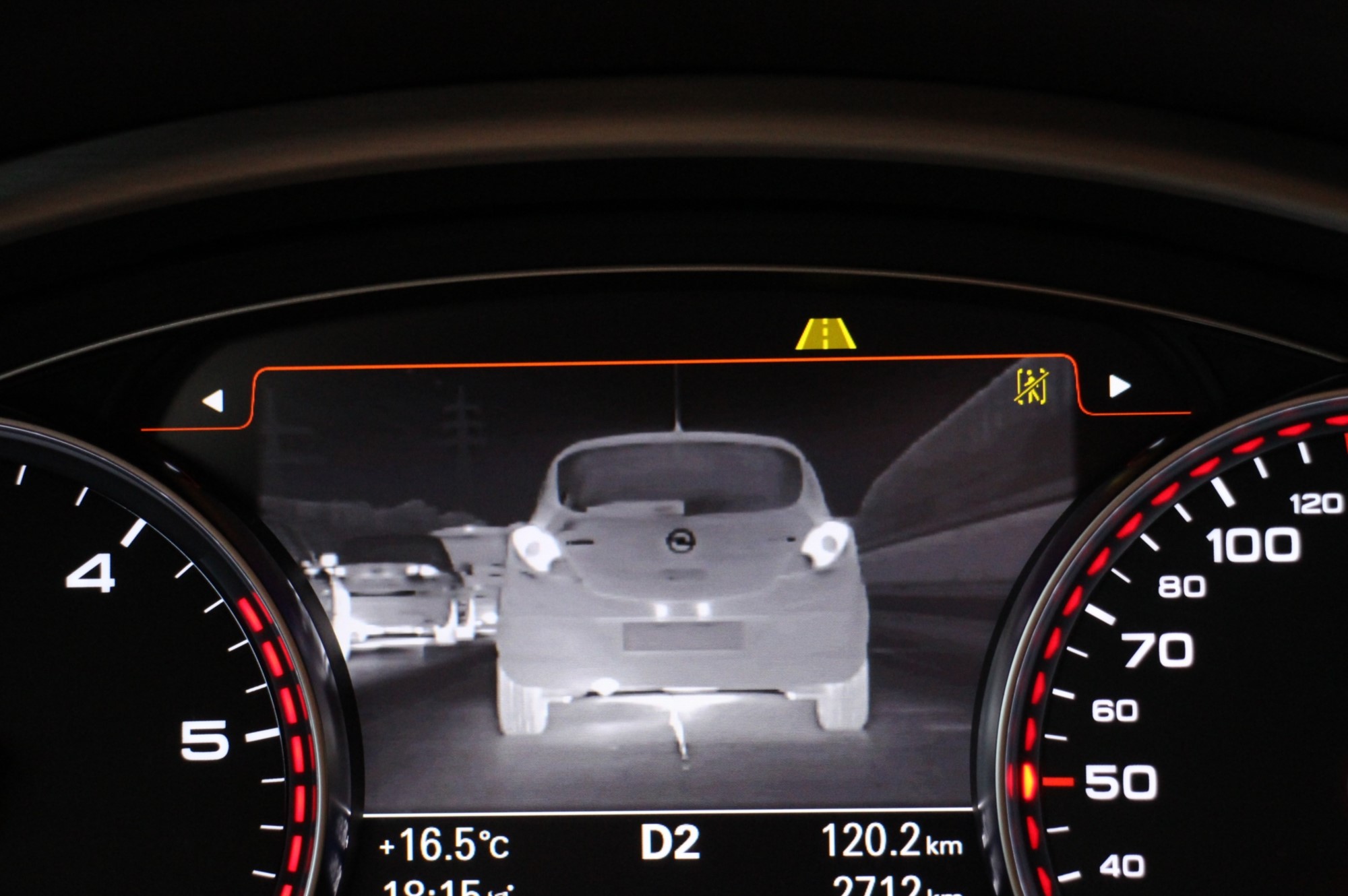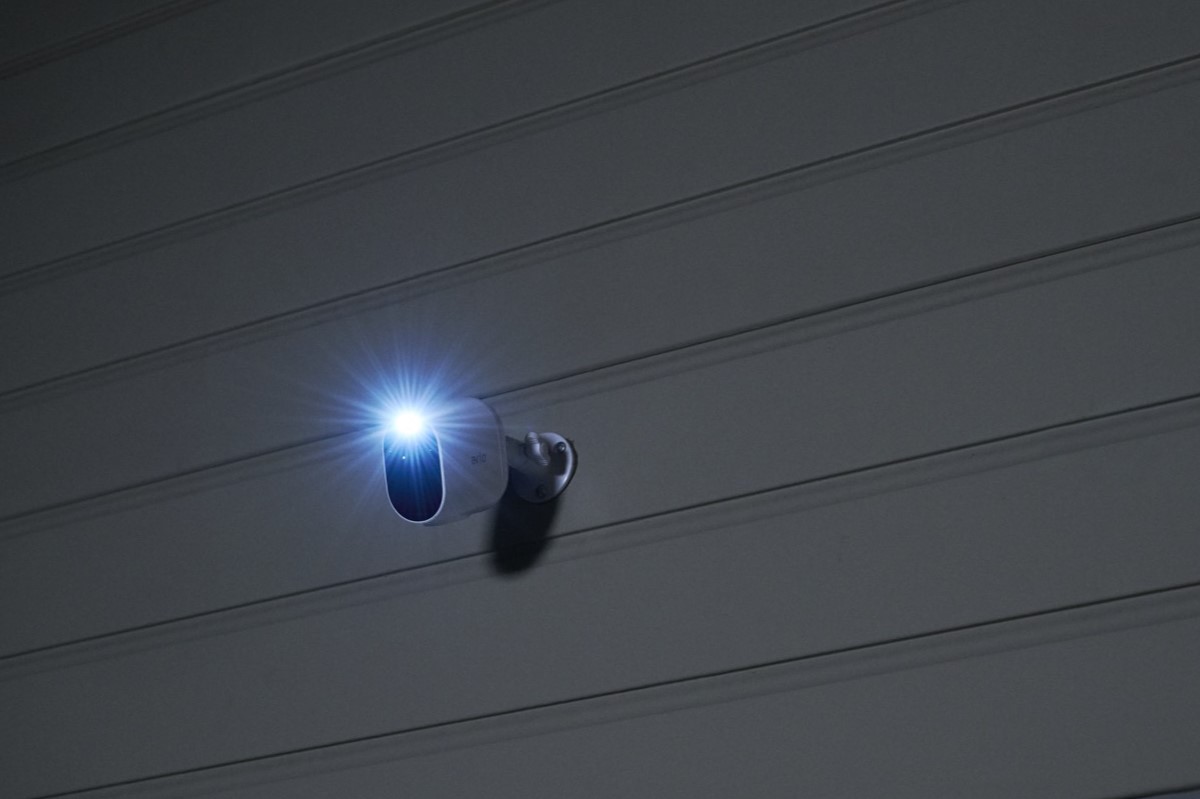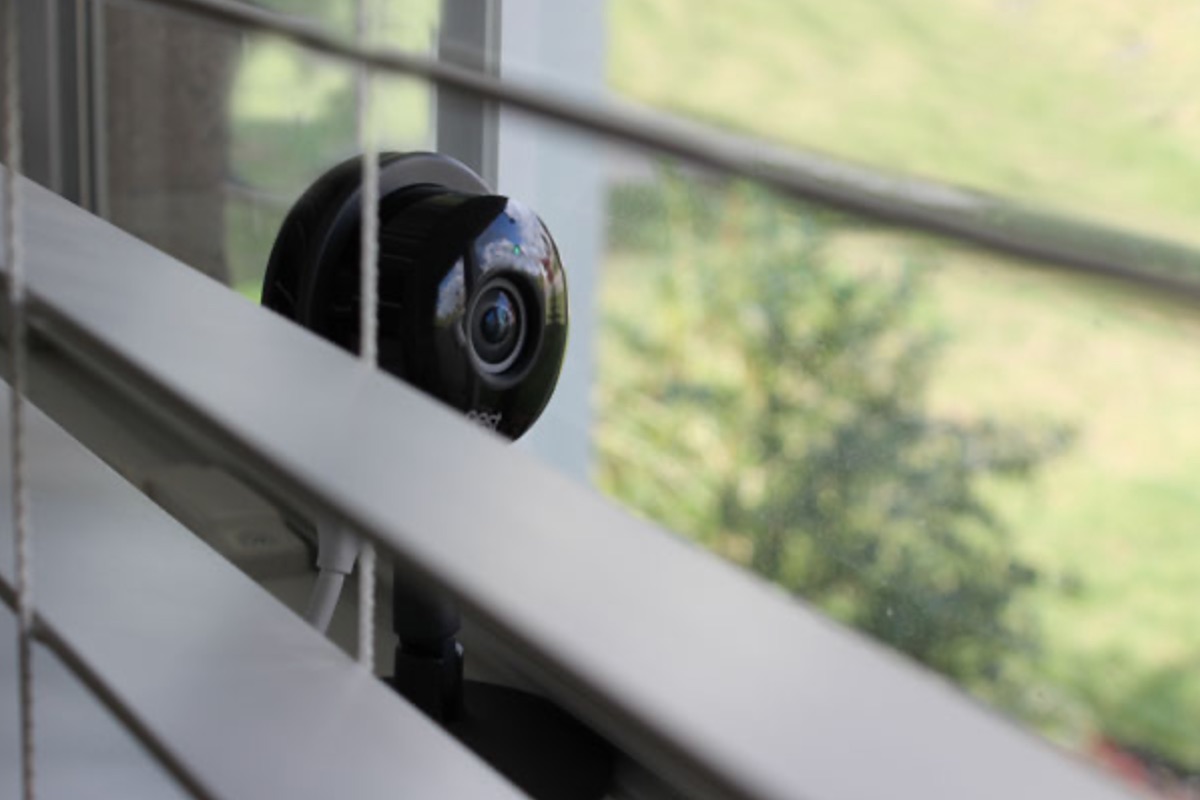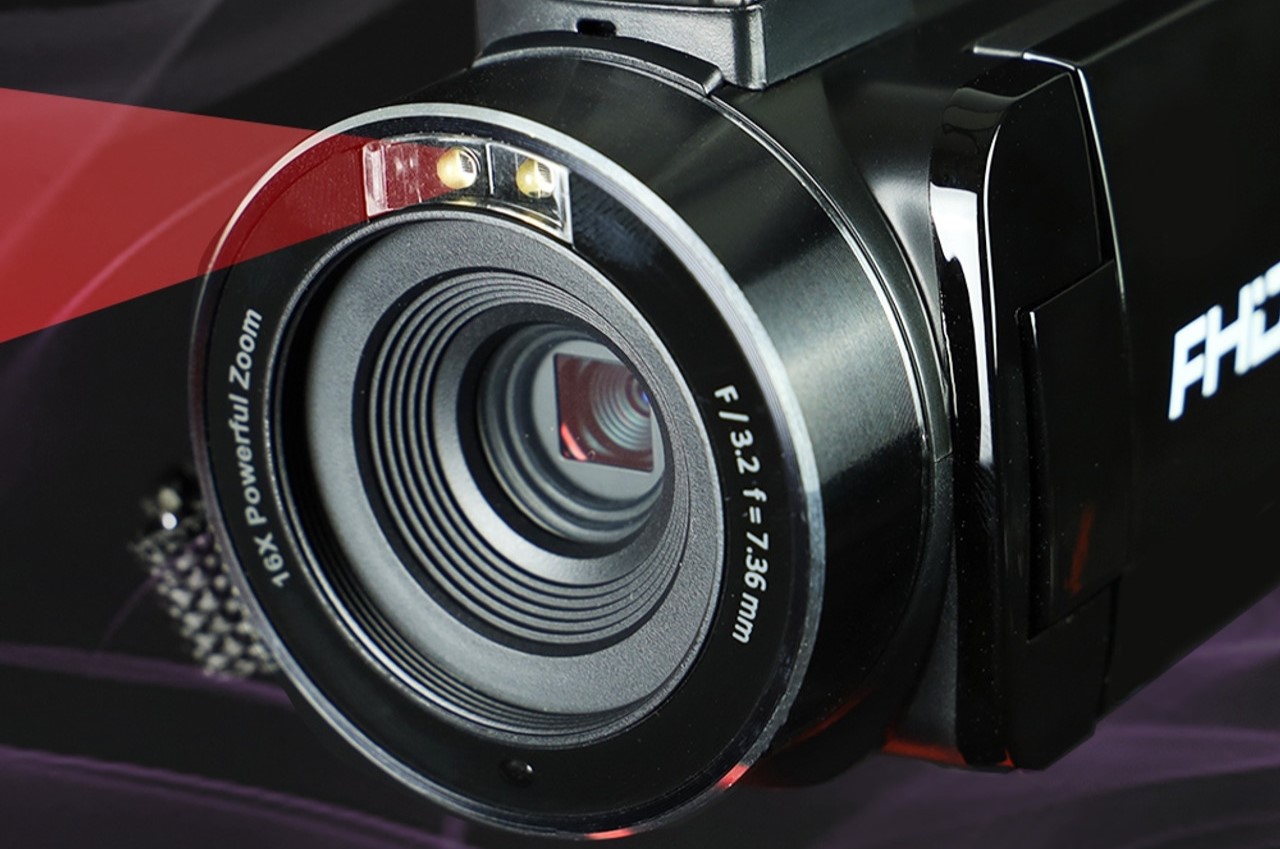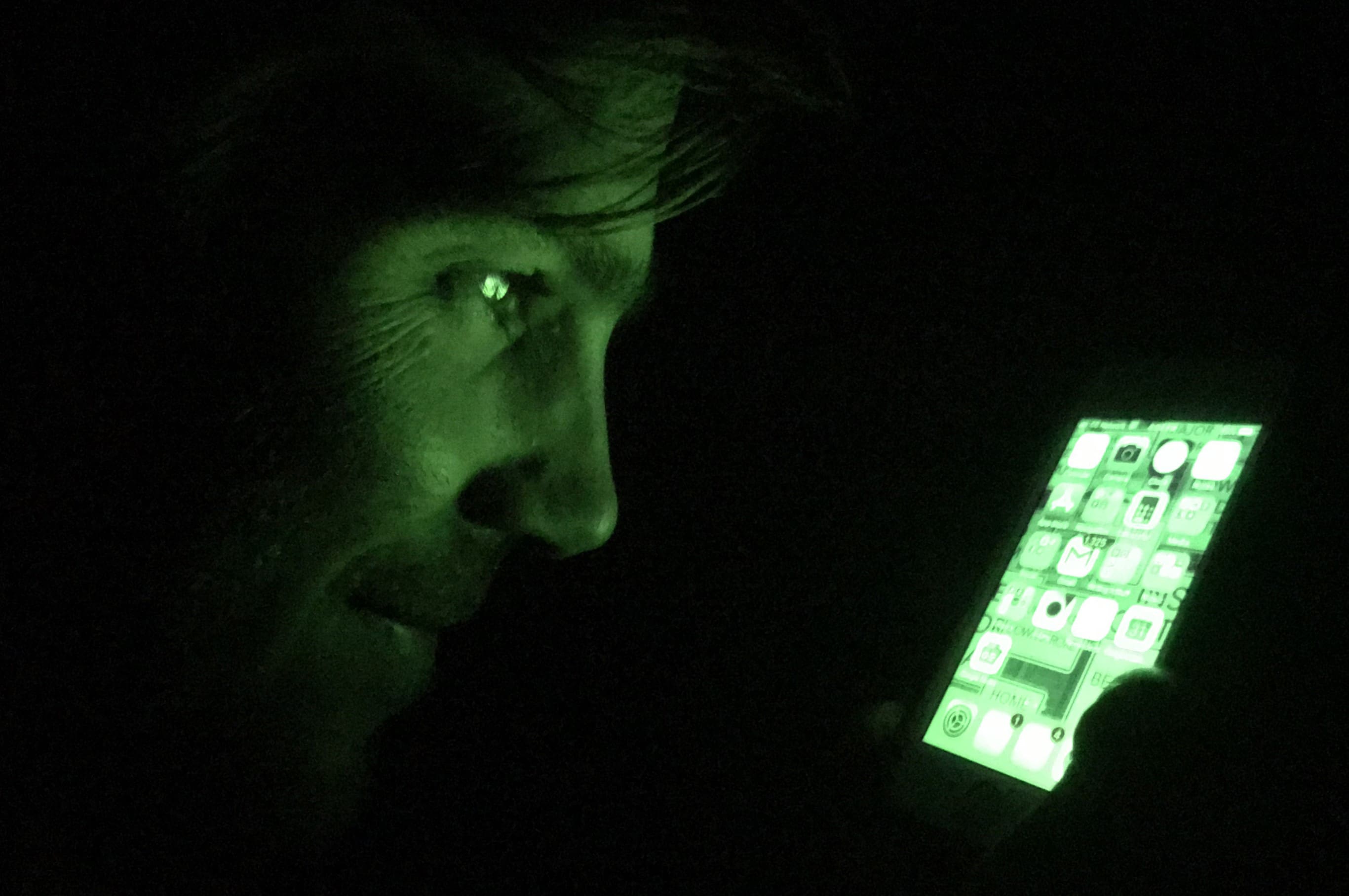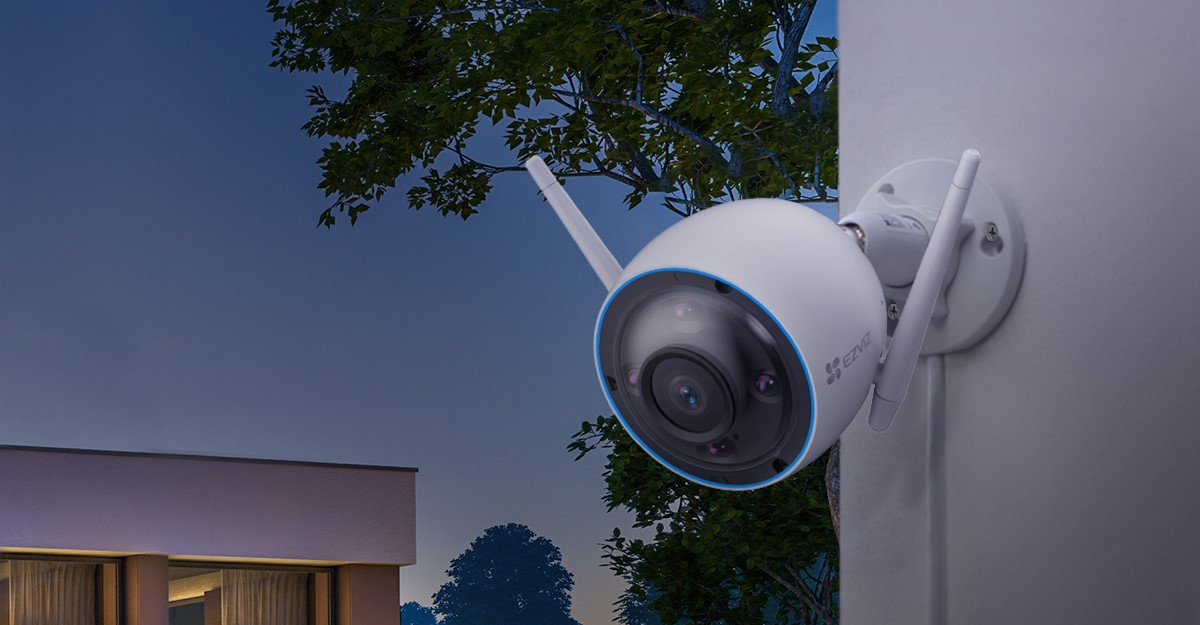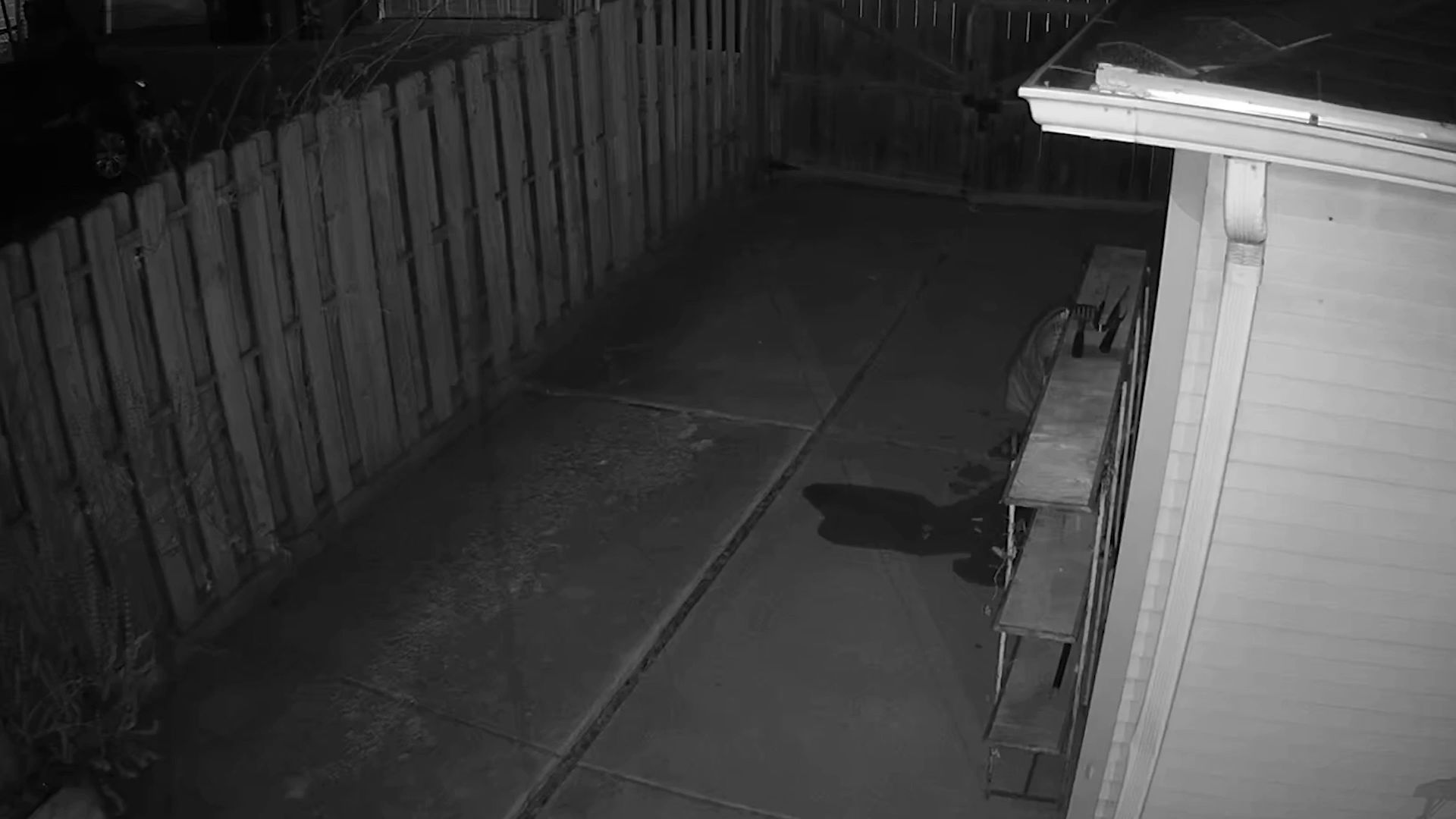Home>Home Security and Surveillance>How And Why Night Vision Cameras Work
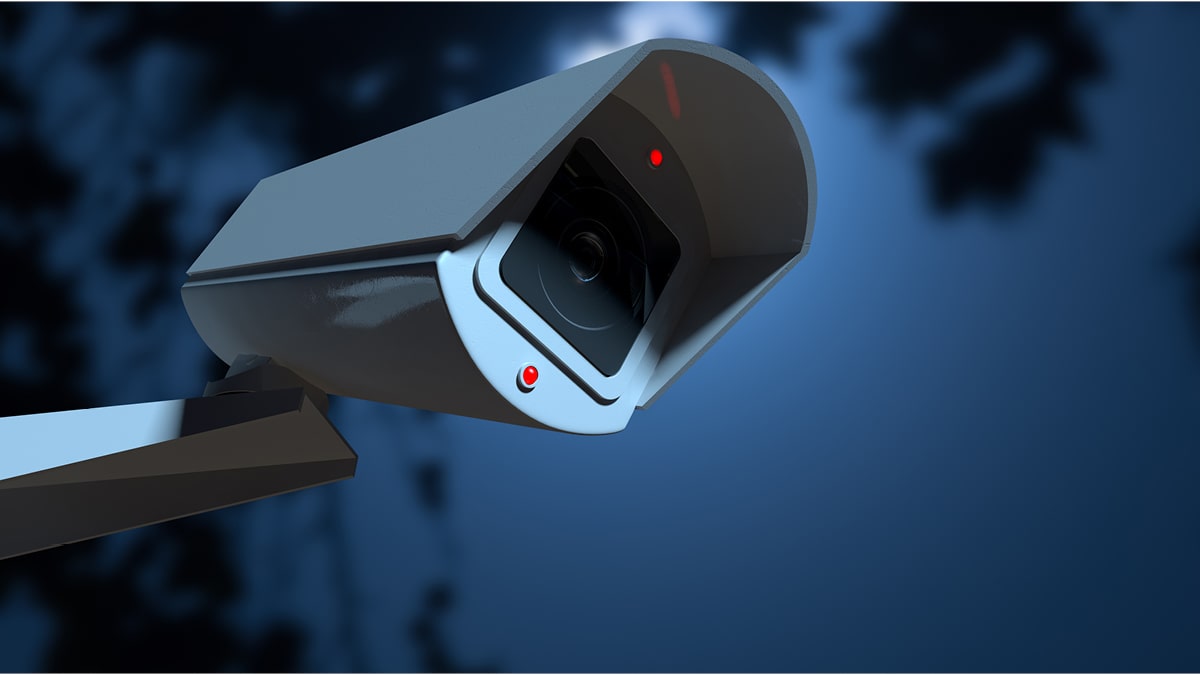

Home Security and Surveillance
How And Why Night Vision Cameras Work
Modified: March 6, 2024
Learn how night vision cameras work and why they are essential for home security and surveillance. Enhance your safety with state-of-the-art technology.
(Many of the links in this article redirect to a specific reviewed product. Your purchase of these products through affiliate links helps to generate commission for Storables.com, at no extra cost. Learn more)
Introduction
Home security and surveillance have become increasingly important in today’s world. Protecting your home and loved ones is a top priority, and one of the most effective ways to do so is by installing a reliable and advanced security system. A key component of any modern security system is a night vision camera.
Night vision cameras are designed to capture high-quality images even in low-light or complete darkness. They provide enhanced visibility, allowing you to monitor your property around the clock. Whether you want to keep an eye on your home while you’re away or simply have peace of mind knowing that your property is secure, night vision cameras are an essential tool.
In this article, we will explore the basic principles of how night vision cameras work, the different types available, and the advantages and limitations of using them. We will also discuss the various applications of night vision cameras, highlighting their importance in home security and surveillance.
So, let’s dive into the fascinating world of night vision cameras and discover how they enable us to see in the dark and protect what matters most.
Key Takeaways:
- Night vision cameras use advanced technology to capture clear images in the dark by amplifying available light or detecting infrared radiation. They are essential for 24/7 home security and have diverse applications beyond surveillance.
- Infrared illumination and image enhancement techniques play crucial roles in enhancing the visibility and performance of night vision cameras. Despite their limitations, these cameras offer valuable advantages and are used in various industries for diverse purposes.
Basic Principles of Night Vision Cameras
Night vision cameras operate on the fundamental principle of capturing and amplifying available light to create a visible image. They utilize advanced technology to extend the range of human vision beyond what is possible with the naked eye.
One common method used in night vision cameras is called image intensification. This process involves collecting the ambient light through the lens and passing it through a photocathode tube. The photocathode tube converts the photons of light into electrons and amplifies their signal.
These amplified electrons are then accelerated through a high-voltage electrical field and strike a phosphor screen, causing it to emit light. This new, intensified light is then focused onto a microchannel plate (MCP), which further amplifies the electrons.
This intensified electron image is finally projected onto a green phosphor screen, creating a visible image that the human eye can perceive. The green color is often used because it provides higher contrast and better visibility in low-light conditions.
Another method used in night vision cameras is infrared imaging. Infrared (IR) light is not visible to the human eye, but it can be detected and captured by a specialized sensor. These sensors, known as infrared sensors or detectors, are sensitive to IR radiation emitted by objects and convert it into a visible image.
There are two types of infrared imaging: active and passive. Active infrared imaging involves the use of a built-in infrared illuminator that emits infrared light onto the scene being monitored. The camera then captures the reflected IR light, creating a visible image.
Passive infrared imaging, on the other hand, relies solely on the existing infrared radiation emitted by objects. This method is commonly used in thermal imaging cameras, which capture the heat signatures of objects rather than the visible light. Thermal imaging cameras are particularly useful for detecting heat sources, such as intruders or fire.
By employing these basic principles of image intensification and infrared imaging, night vision cameras are able to provide clear and detailed images even in complete darkness or low-light conditions. This makes them an essential tool for home security, surveillance, and various other applications.
Types of Night Vision Cameras
Night vision cameras come in various types and configurations, each designed to cater to specific needs and requirements. Understanding the different types can help you choose the right camera for your home security system.
1. Active Infrared (IR) Cameras: These cameras are equipped with built-in infrared illuminators that emit infrared light onto the scene being monitored. They are effective in providing visibility in complete darkness, as the IR light is reflected off objects and captured by the camera, creating a visible image. Active IR cameras are commonly used in outdoor surveillance applications.
2. Passive Infrared (IR) Cameras: Passive IR cameras do not emit their own infrared light but rely on the existing infrared radiation emitted by objects. They capture the heat signatures of objects rather than the visible light, making them particularly useful in detecting intruders or monitoring thermal patterns. Passive IR cameras are commonly used in security systems that require accurate motion detection.
3. Thermal Imaging Cameras: Thermal imaging cameras capture the heat signature of objects or living beings and create a visual representation of their temperature differences. These cameras do not require any ambient light and can provide clear images in complete darkness. They are extensively used in security systems, search and rescue operations, and industrial applications.
4. Wireless Night Vision Cameras: These cameras are equipped with wireless connectivity, allowing for easy installation and flexible placement. They transmit the captured images and video wirelessly to a receiver or a cloud storage system. Wireless night vision cameras are ideal for monitoring large areas or areas where it is difficult to run wired connections.
5. IP-based Night Vision Cameras: IP cameras utilize Internet Protocol (IP) technology to transmit video and data over a network. These cameras can be accessed and controlled remotely, providing the convenience of monitoring your property from anywhere using a smartphone, tablet, or computer. IP-based night vision cameras offer advanced features, such as motion detection and facial recognition.
6. 360-Degree Night Vision Cameras: These cameras provide a full panoramic view of the surroundings, eliminating blind spots and ensuring comprehensive coverage. They are equipped with multiple lenses and sensors to capture a wide field of view and can be particularly useful in large open areas or for monitoring multiple areas simultaneously.
Choosing the right type of night vision camera depends on factors such as the specific requirements of your security system, the area you want to monitor, and your budget. It’s essential to assess your needs and consult with a security professional to determine the most suitable camera for your home.
Infrared Illumination
Infrared (IR) illumination plays a crucial role in the functioning of night vision cameras. By emitting infrared light onto the scene being monitored, it enables cameras to capture clear and detailed images even in complete darkness. Let’s explore how infrared illumination works and its importance in night vision technology.
Infrared illumination works on the principle that objects emit and reflect infrared radiation. Every object with a temperature above absolute zero emits a certain amount of infrared radiation, also known as heat signatures. However, the amount of infrared radiation emitted by objects is typically low compared to visible light, making it difficult for the human eye to perceive.
Night vision cameras, equipped with IR illuminators, solve this problem by emitting infrared light in the same wavelength range as the objects’ emissions. These IR illuminators consist of an array of IR LEDs (Light Emitting Diodes) that emit infrared light in the near-infrared spectrum.
When the IR illuminator emits infrared light onto the scene, it illuminates the objects in the field of view. The objects reflect the IR light back to the camera, and the camera captures these reflected IR rays. Since the camera is sensitive to infrared light, it can convert these IR rays into a visible image.
Infrared illumination offers several benefits for night vision cameras:
- Enhanced Visibility: Infrared illumination greatly enhances visibility in low-light or no-light conditions. It allows the camera to capture detailed images, providing a clearer view of the monitored area.
- No Visible Light: Infrared light is invisible to the human eye, which means that the infrared illuminators do not emit any visible light that could alert potential intruders or disrupt the natural ambiance of the environment.
- Longer Range: Infrared light has a longer wavelength than visible light, enabling it to travel longer distances. This extends the range of night vision cameras, allowing them to capture clear images of objects that are far away.
- Consistency in Image Quality: Infrared illumination ensures consistent image quality regardless of the lighting conditions. It eliminates the need to rely on ambient light sources, providing reliable and consistent performance in any environment.
However, it’s important to note that the range and effectiveness of infrared illumination can vary depending on factors such as the power of the IR illuminator, the sensitivity of the camera’s sensor, and the reflectivity of the objects in the scene. It’s crucial to choose night vision cameras with appropriate IR illuminators for the specific surveillance requirements of your property.
Infrared illumination is a vital component of night vision technology and allows cameras to capture detailed images in the dark. By incorporating this technology into your home security system, you can ensure effective monitoring and enhanced safety for your property and loved ones.
Image Enhancement Techniques
Night vision cameras employ various image enhancement techniques to provide clear and detailed images even in low-light or complete darkness. These techniques compensate for the lack of light and improve the overall visibility and quality of the captured images. Let’s explore some of the common image enhancement techniques used in night vision technology:
- Automatic Gain Control (AGC): AGC is a technique that adjusts the camera’s sensitivity to the incoming light. It amplifies the weak signals and reduces the amplification for brighter areas, ensuring a balanced overall image. AGC helps to capture clear images in low-light conditions without overexposing areas with sufficient illumination.
- Automatic Brightness Control (ABC): ABC adjusts the camera’s output brightness level based on the overall scene brightness. It helps to maintain a consistent level of visibility in different lighting conditions, ensuring that the captured images are neither too dark nor too bright.
- Backlight Compensation (BLC): BLC is used to compensate for strong backlighting conditions, where the subject is in front of a bright light source. It adjusts the camera’s exposure settings to properly capture details in both the bright and dark areas of the scene, reducing the silhouette effect caused by strong backlighting.
- Noise Reduction: In low-light conditions, noise or graininess can be present in the captured images. Noise reduction techniques, such as digital signal processing algorithms, are used to reduce the visual noise and produce cleaner and sharper images with improved clarity.
- Wide Dynamic Range (WDR): WDR is particularly useful in scenes with high contrast lighting conditions, where there are both bright and dark areas. It combines multiple exposures of the same scene with different exposure settings to capture details in both the bright and dark areas, resulting in a well-balanced image with improved visibility.
- Image Sharpening: Image sharpening techniques enhance the clarity and sharpness of the captured images. They emphasize edges and fine details, making the image appear more defined and enhancing the overall image quality.
These image enhancement techniques work in conjunction with the night vision camera’s core technology, such as image intensification or infrared imaging, to provide optimal visibility and improve the overall performance of the camera in low-light conditions.
It’s important to choose a night vision camera that incorporates advanced image enhancement techniques to ensure that you get the best possible image quality in various lighting scenarios. By implementing these techniques, night vision cameras deliver clearer and more detailed images, making them an essential component of any comprehensive home security and surveillance system.
Tip: Night vision cameras work by using image intensification technology to amplify ambient light, allowing the camera to capture clear images in low-light conditions. This technology is commonly used in security and surveillance systems.
How Night Vision Cameras Capture Images in the Dark
Night vision cameras have the remarkable ability to capture detailed images even in complete darkness or low-light conditions. Let’s explore the process by which these cameras capture images in the dark and provide visibility where the human eye cannot.
1. Collecting Available Light: Night vision cameras rely on available light sources, no matter how dim. Even in complete darkness, there may still be trace amounts of light, such as starlight or ambient city lights. The camera’s lens collects this available light and directs it toward the camera’s sensor.
2. Amplifying the Light Signal: The captured light is then directed to the camera’s sensor, which can be based on either image intensification or infrared technology. If the camera uses image intensification, the light is converted into electrical signals by a photocathode tube. The electrons in the electrical signals get amplified and accelerated through a high-voltage field, creating a brighter image.
3. Creating a Visible Image: After amplification, the intensified light signal is projected onto a phosphor screen. The phosphor screen converts the electrons back into photons of visible light. These photons create a green-hued visible image, which is displayed on the camera’s screen or fed into a monitor for viewing.
4. Using Infrared Technology: Infrared night vision cameras work slightly differently. Instead of amplifying the available light, they capture the infrared radiation emitted by objects or rely on an infrared illuminator to provide an external light source. The camera’s infrared sensor detects this radiation and converts it into a visible image.
Both image intensification and infrared technologies used in night vision cameras enable the capture of clear and detailed images in the dark. However, it’s important to note that the range and effectiveness of image capture can vary depending on factors such as the camera’s sensor sensitivity, the quality of the lens, and the amount of available light.
Moreover, some advanced night vision cameras may incorporate additional technologies such as thermal imaging. Thermal cameras capture the heat signatures emitted by objects, rather than relying on visible light or infrared radiation. These cameras can detect temperature variations and provide valuable information for security and surveillance.
Overall, night vision cameras utilize available light or infrared radiation, amplify it, and convert it into a visible image using advanced technology. This allows them to capture images in the dark and provide crucial visibility in low-light or no-light conditions, making them an invaluable tool for home security, surveillance, and other applications.
Advantages of Night Vision Cameras
Night vision cameras offer numerous advantages that make them essential for home security and surveillance. Let’s explore some of the key benefits of using night vision cameras:
- 24/7 Monitoring: Night vision cameras enable continuous monitoring of your property regardless of the time of day. They can capture clear images in low-light or complete darkness, ensuring that you have visibility even during nighttime hours.
- Enhanced Visibility: Night vision cameras utilize advanced technology to capture detailed images in low-light conditions. They can provide visibility in areas where the human eye would struggle to see, ensuring that every corner of your property is monitored effectively.
- Deterrence: The presence of night vision cameras acts as a strong deterrent to potential intruders. The knowledge that their actions are being recorded and monitored can make criminals think twice before targeting your property.
- Rapid Response: Night vision cameras provide real-time monitoring, allowing you to quickly assess and respond to any suspicious activities. You can immediately alert authorities or take necessary action to mitigate potential threats.
- Flexible Placement: Night vision cameras come in various forms, including wireless and IP-based options, allowing for flexible placement around your property. This ensures optimal coverage without the limitations of wired connections.
- Remote Access: Many night vision cameras offer remote access capabilities, allowing you to view the live feed or recorded footage from anywhere using your smartphone, tablet, or computer. This gives you peace of mind and the ability to monitor your property even when you are away.
- Reliable Performance: Night vision cameras are designed to deliver consistent and reliable performance in various lighting conditions. They are built to withstand harsh weather conditions and continue functioning effectively, providing ongoing surveillance for your property.
- Integration with Security Systems: Night vision cameras can be seamlessly integrated into your existing home security system, enhancing its effectiveness. They can work in conjunction with other security devices, such as motion sensors and alarms, to provide comprehensive protection.
- Evidence Collection: In the unfortunate event of a security incident, night vision camera footage can serve as crucial evidence for investigations or insurance claims. The clear and detailed images captured by these cameras can help identify intruders or provide valuable insights into the incident.
With their ability to provide constant monitoring, enhanced visibility, and remote accessibility, night vision cameras offer substantial advantages for protecting your property, deterring potential threats, and ensuring the safety of your loved ones. By incorporating night vision cameras into your home security system, you can have peace of mind knowing that you have reliable surveillance and monitoring capabilities day and night.
Limitations of Night Vision Cameras
While night vision cameras offer significant advantages for home security and surveillance, it’s important to be aware of their limitations. Understanding these limitations can help you make informed decisions when choosing and using night vision cameras. Let’s explore some of the key limitations:
- Range: The range of night vision cameras can vary depending on the specific model and technology used. Some cameras may have a limited range, making it important to determine the coverage area and ensure that the camera’s range meets your needs.
- Visibility in Extreme Darkness: While night vision cameras are designed to capture images in low-light or complete darkness, their effectiveness may diminish in extremely dark environments where there is no available light or infrared radiation. In such cases, additional lighting sources or infrared illuminators may be required for optimal visibility.
- Image Quality: The quality of night vision camera images can vary depending on factors such as the camera’s sensor resolution and the technology used. Some cameras may produce images with lower resolution or graininess, particularly in challenging lighting conditions. It is crucial to choose a camera with the appropriate image quality for your specific requirements.
- Dependency on Ambient Light: Night vision cameras rely on the presence of some available light or infrared radiation to capture images. In areas with extremely low illumination, the camera’s performance may be limited, resulting in less detailed or darker images.
- Cost: Advanced night vision cameras with high-quality image sensors and additional features can be more expensive. It is important to consider your budget and strike a balance between the features and capabilities you need and the affordability of the camera.
- Weather Conditions: Harsh weather conditions, such as heavy rain, fog, or snow, can affect the performance of night vision cameras. The visibility and image quality may be compromised in adverse weather conditions, potentially reducing the effectiveness of surveillance in such situations.
- Power Requirements: Night vision cameras may have higher power requirements due to the technology used. It is important to ensure that you have a reliable power source or suitable battery backup to ensure continuous operation, particularly in areas prone to power outages.
Understanding the limitations of night vision cameras allows you to set realistic expectations and make informed decisions when incorporating them into your home security system. While they offer many benefits, it’s important to assess your specific needs and ensure that the chosen camera can effectively meet your requirements in terms of range, image quality, and visibility in different lighting conditions.
By considering these limitations and selecting the right night vision camera for your specific needs, you can maximize the effectiveness of your home security and surveillance system.
Applications of Night Vision Cameras
Night vision cameras have a wide range of applications beyond home security and surveillance. Their ability to capture clear images in low-light or no-light conditions makes them valuable tools in various industries and situations. Let’s explore some of the key applications of night vision cameras:
- Home Security: Night vision cameras play a vital role in home security systems, allowing homeowners to monitor their property day and night. They provide enhanced visibility, deter potential intruders, and enable rapid response to any suspicious activities.
- Law Enforcement: Night vision cameras are extensively used by law enforcement agencies for surveillance and tactical operations. They aid in tracking criminals, gathering evidence, and conducting covert operations in low-light conditions, improving officer safety and effectiveness.
- Military Operations: Night vision technology is an integral part of military operations. Night vision cameras enable soldiers to navigate, gather intelligence, and engage in combat in darkness, providing a significant tactical advantage on the battlefield.
- Search and Rescue: Night vision cameras assist in search and rescue operations, particularly in remote areas or during natural disasters. They aid in locating missing persons, identifying hazards, and guiding rescue teams in challenging lighting conditions.
- Wildlife Observation: Night vision cameras are used by researchers and wildlife enthusiasts to observe nocturnal animals without disturbing their natural behavior. They provide an opportunity to study and document wildlife in their natural habitat during nighttime hours.
- Industrial Inspection: Night vision cameras find applications in industries such as oil and gas, manufacturing, and infrastructure inspection. They help in monitoring critical infrastructure, detecting anomalies, and ensuring safety measures are upheld during nighttime operations.
- Maritime and Aviation: Night vision cameras are utilized in maritime and aviation sectors for navigation, surveillance, and emergency operations. They aid in detecting obstacles, monitoring vessels or aircraft, and conducting rescue missions during nighttime operations.
- Outdoor Recreation: Night vision cameras can enhance outdoor recreational activities such as camping, hunting, and wildlife photography. They allow enthusiasts to explore and engage in these activities with increased visibility and the ability to capture stunning images in low-light conditions.
- Scientific Research: Night vision cameras support scientific research in various fields such as astronomy, biology, and environmental studies. They enable researchers to study nocturnal behaviors, conduct experiments, and capture valuable data during nighttime operations.
The applications of night vision cameras are expansive, catering to diverse industries and purposes. Whether it’s for enhancing security, facilitating rescues, conducting surveillance, or enabling unique experiences, night vision cameras continue to revolutionize the way we see and operate in low-light environments.
With advancements in technology, night vision cameras are becoming more accessible, versatile, and capable, opening up new possibilities for their applications in different fields.
Read more: How To Blind A Night Vision Camera
Conclusion
Night vision cameras have revolutionized home security and surveillance by providing enhanced visibility and enabling the capture of clear images in low-light or no-light conditions. With their ability to extend human vision beyond the limitations of the naked eye, night vision cameras have become indispensable tools for protecting our homes and loved ones.
Throughout this article, we have explored the basic principles of how night vision cameras work, the different types available, and their advantages and limitations. We have also discussed the importance of infrared illumination and the various image enhancement techniques employed by night vision cameras.
Night vision cameras offer numerous advantages, including 24/7 monitoring, enhanced visibility, deterrence of potential intruders, rapid response capabilities, and remote access. They can be integrated into existing security systems, providing seamless monitoring and detection.
However, it’s crucial to consider the limitations of night vision cameras, such as range, visibility in extreme darkness, image quality, and power requirements. Understanding these limitations can help in selecting the right camera and managing expectations.
The applications of night vision cameras extend beyond home security and surveillance. They find utility in law enforcement, military operations, search and rescue, wildlife observation, industrial inspection, maritime and aviation, outdoor recreation, and scientific research.
In conclusion, night vision cameras have transformed our ability to see and monitor our surroundings in low-light conditions. Whether for enhancing security, aiding in rescue missions, or enabling unique experiences, night vision cameras have become essential tools across various industries and applications.
As technology continues to advance, night vision cameras will further evolve, providing improved image quality, extended range, and more innovative features. Embracing this technology allows us to protect what matters most and navigate the darkness with confidence.
Frequently Asked Questions about How And Why Night Vision Cameras Work
Was this page helpful?
At Storables.com, we guarantee accurate and reliable information. Our content, validated by Expert Board Contributors, is crafted following stringent Editorial Policies. We're committed to providing you with well-researched, expert-backed insights for all your informational needs.
